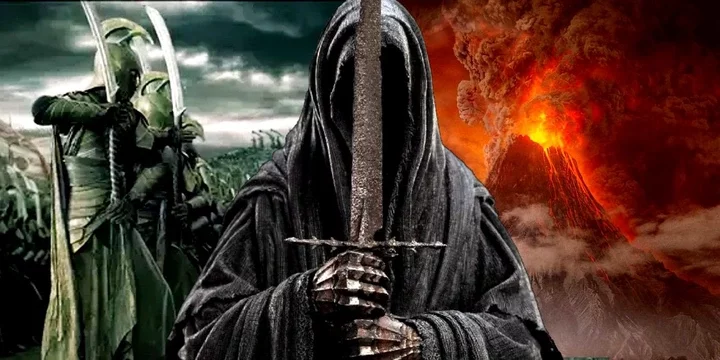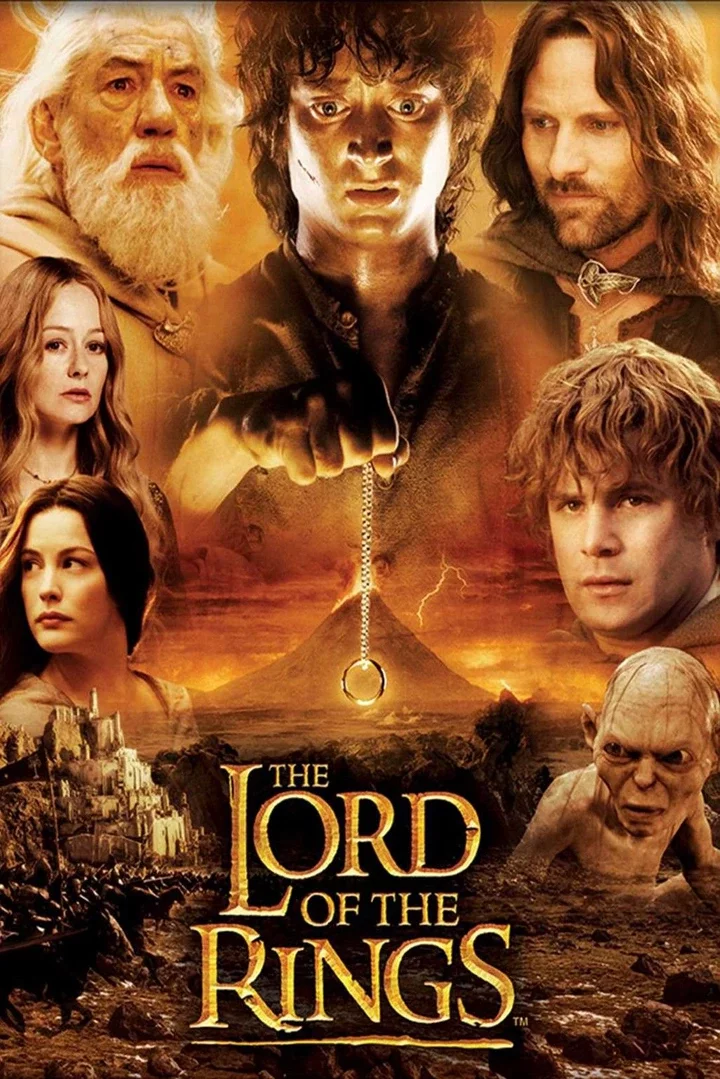
The War of the Last Alliance, as seen in the prologue of Peter Jackson's The Lord of the Rings: The Fellowship of the Ring, was the largest conflict of the Second Age of Middle-earth. After Sauron attacked the Gondorian cities of Minas Ithil and Osgiliath, Isildur created the Last Alliance of Elves and Men to strike back against the Dark Lord and put an end to his reign of terror. In turn, Sauron summoned a massive army in hopes of crushing his enemies once and for all. Jackson's film only showed Orcs among the forces of Sauron, while J. R. R. Tolkien's novels mentioned that they were joined by Men, Dwarves, and various monsters who served the Dark Lord. Yet in both versions of the story, Sauron's most loyal minions, the Nazgûl, were conspicuously absent.
At the end of The Lord of the Rings, the Nazgûl flew straight to Mount Doom when they sensed that their master was in danger and tried to prevent the destruction of the One Ring, but they did no such thing even as the Last Alliance of Elves and Men laid siege to Barad-dûr. The Nazgûl proved highly effective warriors in the War of the Ring, especially during the Battle of the Pelennor Fields, so they might have been able to turn the tide of the War of the Last Alliance in Sauron's favor. Tolkien did not provide a reason for their absence, but some clues from the novel version of The Lord of the Rings point towards a possible explanation.

The Nazgûl Struggled to Fight Elves
The Nazgûl would not have been as helpful in the War of the Last Alliance as fans might expect. Their greatest strength was their ability to instill fear in their enemies; during the Siege of Minas Tirith, many of the Gondorians and Rohirrim were overcome with dread at the mere sight of the Nazgûl, and this effect only became more powerful as they spread their poisonous Black Breath across the battlefield. However, Elves were not as easily frightened as Men. In the chapter "Many Meetings" from The Fellowship of the Ring, Gandalf tells Frodo that Elves "do not fear the Ringwraiths, for those who have dwelt in the Blessed Realm live at once in both worlds and against both the Seen and the Unseen they have great power." During the War of the Ring, Elven warriors were relatively uncommon, but they made up a large portion of the Last Alliance of Elves and Men, hence the name.

Further, even when battling Men, at least one of the Nazgûl would have been weaker in the War of the Last Alliance than he was during the Siege of Minas Tirith. In a letter to Forrest J. Ackerman about a rejected film treatment of The Lord of the Rings, Tolkien explained that the Witch-king of Angmar was more powerful in The Return of the King than in the earlier portions of the story: "There, put in command by Sauron, he is given an added demonic force." In the Second Age, the Witch-king would have been closer to his The Fellowship of the Ring self, whom Aragorn could defeat using nothing but a torch.
Sauron's Minions Had Many Duties

| Unnamed Battle at Osgiliath | 3429-3434 |
| Battle of Dagorlad | 3434 |
| Siege of Barad-dûr | 3434-3441 |
If the Nazgûl did not participate in the War of the Last Alliance, what were they doing during those 12 years? They may have simply been elsewhere at the time. Though the armies involved in the War of the Last Alliance were enormous, the fighting only encompassed a few locations: Osgliath, Dagorlad, and Mordor. Life carried on as usual throughout much of Middle-earth. The Nazgûl might have been organizing the Men who served Sauron in the distant lands of Rhûn or Harad, or they might have been establishing lesser strongholds to which Sauron could retreat if necessary; they did something similar in the Third Age, preparing Barad-dûr for their master's arrival while he resided in Dol Guldur. An especially devious possibility is that they carried out attacks on the kingdoms that had rendered themselves defenseless by sending so many soldiers away for the War of the Last Alliance.
There is another, somewhat less interesting possibility. The Nazgûl might have participated in the War of the Last Alliance but gone unmentioned in the text. The conflict lasted over a decade, and Tolkien did not detail every aspect of every battle. The Nazgûl could have been involved in a minor capacity that Tolkien did not think was worth writing down. Whatever the reason, Sauron was wise to not risk the lives of the Nazgûl in the Second Age, as they served him far better in the Third. Though competent duelists, they truly excelled as assassins, torturers,

The Lord of the Rings is a series of epic fantasy adventure films and television series based on J. R. R. Tolkien's novels. The films follow the adventures of humans, elves, dwarves, hobbits and more in Middle-earth.
Download Exciting Movies Here.

















Comments